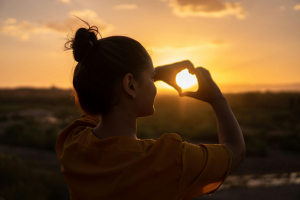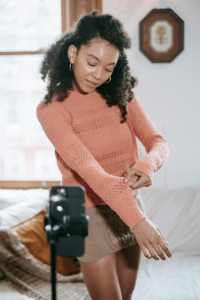Want to up your photography game? Here’s how to do more than just take great selfies!
Selfies are a fun way to express yourself creatively and connect with other people on the internet. You can use them to capture yourself through different moments in your life, whether they’re happy, sad, contemplative, or adorable.
Contrary to popular belief, a selfie can be much more than a superficial reflection of your face; it can also be a tool for improving your photography skills.
If you have a smartphone, you have a camera. But that doesn’t mean you understand exactly how to use it to snap the best possible photos—whether of your face, your pets, your breakfast, or anything else that captures your attention!


How Can I Improve My Photography Skills Beyond The Basic Selfie?
Improving your photography skills has never been easier, more accessible, or more fun. There’s an abundance of tools, tricks, and tips everyone can use to get more value out of their smartphone camera.
Here are seven of them:
-
Photograph what you love
They say that beauty is in the eye of the beholder, and this adage rings true when it comes to photography. The best photos happen when you’re genuinely interested in or inspired by your subject.
If you wander around and snap pictures of random stuff you don’t care about, the photos are unlikely to turn out well. Instead, let yourself be guided by subjects or scenes that appeal to you more personally. This can help you connect with the subject and capture it more effectively.
-
Make the most of natural light

Photographers across the board agree that natural light is hands-down the best light for taking photos. Unless you’re a product photographer whose aim is exclusively to highlight a brand label or product design, natural light is the most effective way to draw out a subject’s best visual qualities.
This is particularly true for portraiture, selfies, food photography, and nature photography. So next time you get the urge to take some photos, head to a large window or go outside to get creative.
Bonus tip: Golden Hour is widely referred to as the most flattering time of the day to take photos of people. It happens just after sunset when the direct sunlight is gone, but the warm, golden, rosy hues of the sunset remain. Take your photos during Golden Hour, and you’ll not only avoid harsh UV rays, but you’ll also get amazing shots!

-
Invest in a quality editing program
Even the world’s most talented professional photographers put their images through heavy post-processing software to help their work reach its highest creative potential. Investing in a simple but effective editing app can help you achieve a similar goal.
Some of the best amateur smartphone photo-editing apps and software programs are VSCO, SnapSeed, Adobe Photoshop Express, Canva, and Picstart.
Using apps like these will give you a much higher degree of control over the lighting, exposure, saturation, and other key elements of your photo quality, resulting in a more balanced overall image.

-
Avoid the zoom trap
While zooming in can be an incredibly useful tool for documenting important, faraway moments when you’re out in nature, it can also degrade the quality of your photos. Unless absolutely necessary, try to avoid zooming in so that your photos look crisp, clear, and more naturally framed.
If the situation absolutely calls for a closer shot, rather aim to get physically closer to your subject so that the pixel count is as high as possible and you don’t lose essential resolution from your image.
-
Get to grips with gridlines
Understanding the rule of thirds is a great way to kickstart your photography journey. But if you don’t have the time to learn or you find the concept confusing, there’s an easy way out – just activate the gridlines on your smartphone camera so that it can do the hard work for you.
Utilizing gridlines will make it much easier for you to visualize the composition of your photos. The lines help separate your image into a clear grid, allowing you to center and frame your subject in a more balanced and visually pleasing way.

-
Keep your lens clean and scratch-free
Another important thing to know about unlocking photography skills is to keep your hardware in excellent condition. If you are using a smartphone, be wary of tossing it about into pockets and bags—the lens may get scratched and dirty, negatively affecting your photos.
You can keep your lens clean by putting your phone into a protective case, handling it gently, and polishing the lens regularly with a soft microfiber cloth.
By keeping your lens clean and scratch-free, you can help your camera capture clearer, crisper, and higher-quality photos, thus improving your photography considerably.

-
Get snap happy & share your work
Practice makes perfect. Having fun with your camera and taking lots of photos wherever you go is a good way to build creative confidence and inspire you to continue growing in your photography journey. Don’t be shy – take photos of yourself, your life, and the things you love.
Don’t let those photos sit on your camera roll, either. Share them with the world! You can post them on social media, create your own online portfolio, or even join a photography forum and ask for feedback from other photographers.
You may get great advice on improving further or what people like to see. At the very least, you’ll come out of the experience with an abundance of happy memories.

The Takeaway
Expanding your photography knowledge is a great way to not only take better selfies but also gain the ability to snap photos of anything that inspires you at the time.
You don’t need to be a professional photographer to know how to take great photos, but if that’s a goal of yours, acquiring some basic skills like these first is a great way to start. Either way, remember to stay creative and have fun!
[wp-faq-schema title=”Frequently Asked Questions”]
